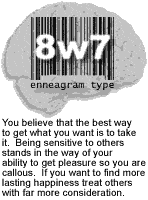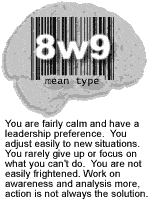But perhaps my favorite example of character creation involves the artificial westernizing of the third-person pronoun. Like other kinds of Chinese, spoken Mandarin has only one third-person personal pronoun (tā). It was traditionally written 他, a character with a person 人 as the radical on the left side. Apparently under the pressure of Western languages, which distinguish "he," "she," and "it" Chinese in recent decades have created a new character for tā in the sense of "she" which replaces the sexually indeterminate person 人 with a 女 woman: 她, gradually restricting 他 to mean specifically "he." Another character, originally an alterantive writing for 他, has been pressed into service for tā in the sense of "it": 它.
On the model of 他 and 她, other characters have occasionally been proposed for tā when it refers to an animal 牠 or a god 祂. To the best of my knowledge all of these (except 他 itself) are XXth century creations. The fact that they are in computer fonts suggests how common they have become.
Similarly, some sectarians who worship a mother goddess have created an underground glyph made by turning one of the conventional symbols for "mother" 母 on its side to produce . This is used in sectarian tracts and as a decorative motif to refer to the mother goddess. In recent decades it has been possible to get arrested for writing the character 母 this way. (Don't show this page to a late Imperial or modern Communist official! And don't ask how it got into my computer.)
Then there are the obscene characters invented to be scribbled by rude schoolboys on the walls of public johns. An oldish one of these is made by placing the radical "enter" 入 atop element "meat" 肉 to produce an obscene graph referring to sexual intercourse 肏. It is somewhat shocking to discover this in the Unicode Consortium's code list; it was certainly not in the original Chinese national standards. The word is pronounced cào, in case you feel like being a rude schoolboy.
from a page on the Chinese Language.

















